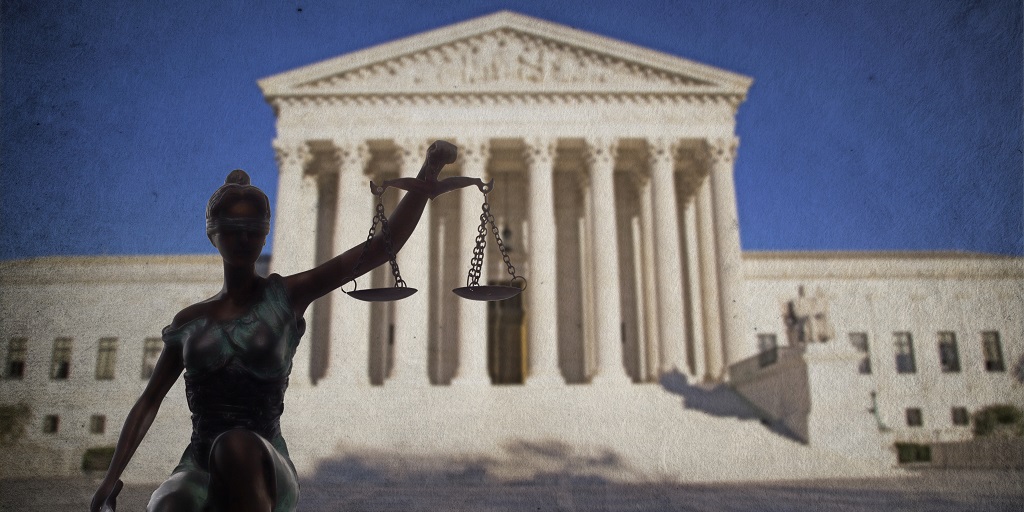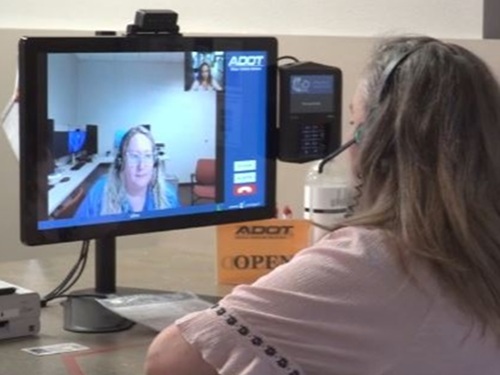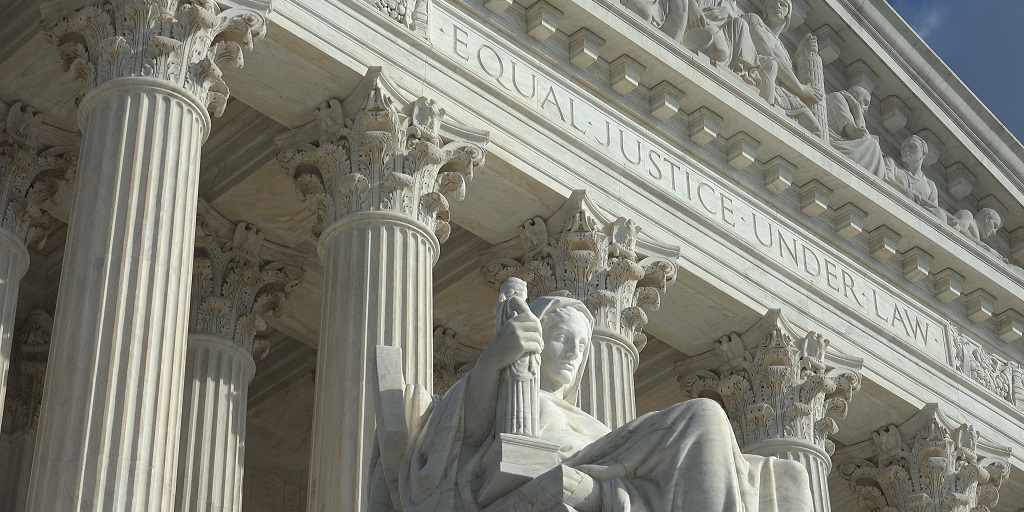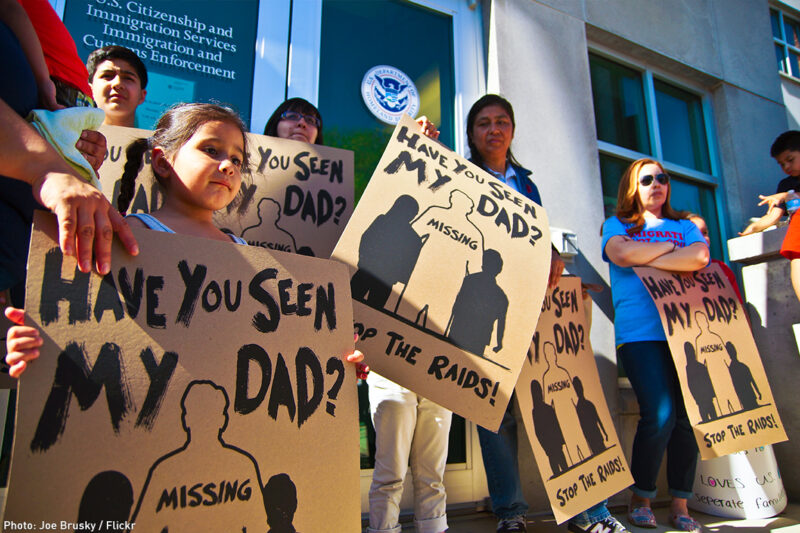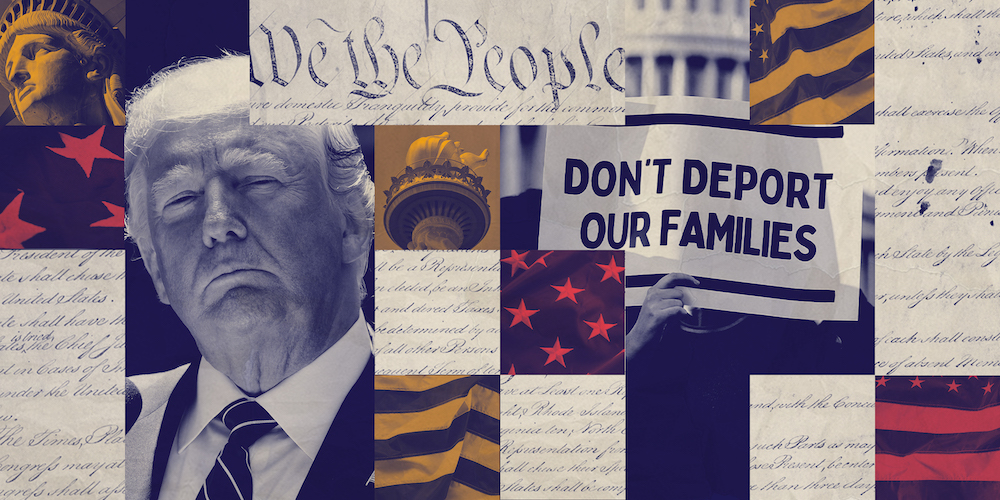
Bridging Digital Verification and Legal Integrity
In an era where the digital world increasingly intertwines with legal processes, observing how websites secure user interactions provides an unexpected yet critical insight into modern legal practices. The simple act of verifying that you are human—an experience that many of us have encountered on platforms like ein.az.gov—reveals an underlying system of protective measures aimed at preserving the integrity and security of online communications. This opinion editorial explores this phenomenon through a legal lens, examining how the seemingly mundane step of human verification resonates with broader legal principles in cybersecurity, digital rights, and due process.
While this verification process might seem like just another technical requirement, it encapsulates several key legal questions: What defines a trustworthy digital interface? How do technological checks relate to individual rights? And, most importantly, what legal implications can be derived from automated systems that administer such checks? This discussion seeks to address these questions, analyzing how Cloudflare’s security mechanisms, coupled with user verification processes, foster a balance between operational safety and the protection of civil liberties.
Understanding the Role of Automated Human Verification in Legal Contexts
Automated human verification systems, colloquially known as CAPTCHAs, have become almost ubiquitous as a defensive measure against bots and malicious attacks. At first glance, these systems are designed solely to block unwanted automated interactions. However, when examined from a legal perspective, they serve a dual purpose: protecting the website’s infrastructure and safeguarding the personal data of its users. In legal circles, this duality raises questions related to privacy rights, data protection regulations, and the duty of care websites owe to their users.
The process described by ein.az.gov—where a site verifies you as human before proceeding—is much more than a technical hurdle. It is a reflection of a broader legal strategy to prevent fraudulent activities and maintain the integrity of online platforms. Legal professionals argue that such systems contribute to a safer digital environment by reducing the risk of cybercrimes, including identity theft and unauthorized data breaches, which carry serious legal ramifications for both the service provider and the affected users.
By ensuring that every user is a bona fide human being, these measures help mitigate the risk of automated systems manipulating online content. This not only protects intellectual property but also preserves the fairness and accessibility of legal platforms where decisions may directly affect individuals’ rights and responsibilities.
Cloudflare’s Role in Securing Legal Online Platforms
Cloudflare, a well-known name in the realm of internet security, is responsible for the performance and safety checks mentioned in the verification process. Though often operating behind the scenes, Cloudflare’s systems play a crucial role in maintaining the trustworthiness of legal websites by monitoring and filtering suspicious activity. Importantly, this involves examining the security of user connections, thereby preventing intrusions and ensuring that the website can safely serve its contents.
From a legal standpoint, the intricacies involved in such security measures are often subject to close examination. The implementation and application of these automated verification tools can raise what many legal experts consider to be tricky parts: balancing a need for public safety with an individual’s right to privacy. In many respects, Cloudflare’s filtering systems represent a double-edged sword—they effectively prevent cyber threats but simultaneously involve a level of monitoring that some argue has the potential to impinge on personal freedoms.
In a dynamic digital ecosystem, service providers must harness automated security measures without overstepping legal boundaries. For example, legal precedents have shown that overreaching surveillance by private companies can lead to legal challenges, particularly when these practices seem to encroach upon the area of civil liberties. Here, Cloudflare’s role could be seen as a critical component in mitigating such potential risks, as it is designed to follow strict protocols, limit data retention, and comply with international data protection standards.
Furthermore, the transparency and accountability of these systems are subjects of ongoing legal debates. With increasing calls for digital rights and transparency in government and corporate processes, it remains essential that companies like Cloudflare offer clear explanations regarding their role in managing digital security. This extends to legal obligations under policies such as the General Data Protection Regulation (GDPR) in Europe or analogous rules elsewhere.
Legal Precedents in Digital Human Verification
The intersection of legal frameworks and emerging technologies is often marked by a series of case studies that test the boundaries of both privacy and security law. A notable area of focus is the concept of “due process” in the digital sphere. Ensuring that automated systems do not inadvertently exclude legitimate users or unfairly target individuals requires an in-depth appreciation of certain legal principles.
Over the past decade, various cases have highlighted the challenges that arise when automated human verification processes are involved. While such cases are diverse, many share common threads, such as:
- Disputes over erroneous blocking of legitimate users.
- Concerns regarding the storage and processing of user data during verification.
- Arguments over the transparency of security protocols used by online platforms.
These examples underscore that while automated verification is essential for cybersecurity, it must be implemented with strict adherence to legal accountability. Courts have consistently emphasized that the state or private companies must provide clear evidence that their monitoring systems do not disproportionately infringe on individuals’ rights. In practice, this often means ensuring that users have access to a complaint or redress mechanism whenever an error occurs.
The legal community continues to watch carefully as new precedents emerge, especially in relation to how these verification methods are integrated into increasingly sophisticated digital ecosystems. The law must keep pace with technology, even when that means venturing into areas that are off-putting and nerve-racking to both developers and legal experts alike.
Assessing the Impact of Automated Verification on User Rights
The requirement to prove one’s humanity by undergoing a verification process raises a number of legal issues that merit consideration. At the top of these issues is the fundamental question of consent and autonomy. When a user is presented with a verification prompt, they are unknowingly entering an agreement with the website operator that entails limited monitoring of their interactions. Legal scholars argue that ownership of personal data should remain with the individual, even amid necessary security checks.
This automated consent is a fine example of a tense legal matter blended with technological necessity. While the need for security is super important—if not critical—to maintaining operational integrity, the method of enforcing this measure must not bypass established legal protections. For instance, users should be clearly informed how their data will be used, stored, or destroyed once the verification process is complete. Such transparency ensures that a website’s engagement with a user is fair and respectful of their legal rights.
Moreover, the legal discourse surrounding this issue emphasizes that there must be limitations on the authority of automated systems. This means that the algorithmic decisions made during the verification process should be subject to human oversight, ensuring that the final decision respects fundamental legal principles such as non-discrimination and proportionality. In a legal environment that prizes clarity and fairness, ensuring such oversight is not merely a recommendation—it is a legal necessity.
Some of the key concerns about automated human verification from a legal viewpoint include:
| Issue |
Legal Implications |
| Automated Decision-Making |
Potential for bias and lack of transparency, possibly challenging the fairness required under law. |
| Data Privacy |
Risk of unauthorized use or breach of personal data, thus invoking data protection laws. |
| User Consent |
Ensuring clear communication and consent processes that align with legal standards of informed decision-making. |
| Access to Redress |
Legal obligation to provide a means for users to challenge or appeal incorrect decisions. |
This table underscores the necessity for legal professionals and digital security experts to work together in crafting guidelines that respect both the functional imperatives of technology and the rights of the individuals they serve.
Legal Dynamics in the Age of Digital Verification
The methodology of verifying human interaction on websites, at its core, is designed to thwart illegitimate access. Yet, the delicate balance between public interest and individual rights remains one of the most compelling debates in contemporary legal circles today. A legal editorial on this subject must recognize that as websites adopt more sophisticated methods of user security, every automated check carries with it legal baggage that must be carefully unpacked.
On one hand, digital verification represents a technologically driven solution to a particularly taxing problem: protecting online systems from bots, spam, and fraudulent access. The creative use of CAPTCHAs and similar systems can be an effective defense when it comes to countering these challenges, especially in high-stakes arenas such as legal and financial websites.
On the other hand, however, these systems are loaded with issues that could potentially erode user trust if not implemented responsibly. Appeals to core legal requirements, such as fairness, transparency, and accountability, are essential in designing systems that users can rely on. Recognizing subtle details in everyday legal decisions—like the decision to allow automated human verification—can set a precedent for how future digital interactions are regulated.
The balance between safety and liberty often depends on the underlying legal foundations that support the use of such technology. An over-zealous implementation could result in legal challenges that undermine the very purpose of these security measures. Instead, a measured approach that carefully addresses every little twist is necessary to ensure that operational safety does not extricate user rights.
Legal professionals thus have a significant role in questioning and refining these systems. Their work involves not only taking a closer look at existing practices but also actively participating in the development of new regulations that align technological capabilities with robust legal standards.
Exploring the Fine Points of Digital Security Checks
Taking a closer look at digital security checks reveals a myriad of subtle details that contribute to their overall efficacy and legal robustness. Each step in the verification process is filled with complicated pieces that require both technical and legal expertise. By examining these, one realizes that what appears to be a simple interaction between a website and a user is backed by a heavy framework of legal norms and technological standards.
For example, when a website like ein.az.gov verifies that you are human, it initiates a series of events designed to protect the integrity of the connection. This involves the assignment of a unique identifier, such as a Ray ID, which serves as a digital fingerprint to monitor further interactions. Legally speaking, such identification measures are essential for tracking unauthorized access and holding potential offenders accountable.
However, these processes also present tricky parts that need clear legal frameworks. Some of these include:
- The retention period for digital fingerprints and whether this retention aligns with data protection regulations.
- The potential for these measures to be used in tracking user behavior beyond the intended security purpose.
- The responsibility of website operators for ensuring that the data is not misused or mishandled.
In addressing these complicated pieces, one must factor in the legal concept of proportionality. The verification system is intended to be a super important tool for website security but must be reasonably limited in scope so that it does not become overly intrusive. Legal frameworks, therefore, need to clearly define what constitutes acceptable use and retention of such data.
This balancing act is critical in ensuring that as technology evolves, user rights continue to be defended with the same vigor as corporate interests. As we dive deeper into the legal ramifications of digital security checks, it becomes evident that an interdisciplinary approach, marrying both legal acumen and technological savvy, is necessary to manage the evolving landscape.
Balancing Innovation and Regulation in Modern Legal Platforms
The ongoing development of security measures such as human verification raises important questions about innovation versus regulation. On one side, rapid technological growth is a testament to human ingenuity and our persistent drive to overcome new challenges, such as online fraud and cyberattacks. On the other side, regulation is essential to ensure that these innovations do not sidestep legal responsibilities or infringe upon civil rights.
Legal scholars and regulators alike are increasingly faced with the task of crafting laws that are flexible enough to accommodate new technologies while being robust enough to uphold established legal principles. In this context, a key consideration is ensuring that security measures—and the data they generate—are used ethically and responsibly.
Steps to achieving this balance include:
- Regular audits of automated verification systems to confirm compliance with privacy laws.
- The development of clear guidelines on data retention and deletion after verification procedures.
- Establishing clear redress mechanisms for users who are adversely affected by automated decisions.
- Engaging in continual dialogue between technologists, legal experts, and policymakers to update regulations as technology evolves.
This list illustrates the collaborative efforts required to find your way through the twists and turns of regulating digital tools. When such cooperation takes place, the legal framework not only protects users but also encourages further innovation by providing clear boundaries within which technology can safely evolve.
Ensuring that regulation keeps pace with technological advancement is a responsibility that falls on both industry leaders and government entities alike. It is through this stewardship that we can truly ensure a secure, fair, and accessible digital environment for everyone, regardless of whether they are accessing legal documents, social media, or any other online resource.
Implications of Digital Security Checks on Consumer Trust
One of the less obvious but equally important aspects of automated human verification is its impact on user trust. In the legal field, trust is a cornerstone of any contractual or procedural relationship. When a website deploys advanced security measures such as those provided by Cloudflare, it not only protects itself from harm but also sends a powerful signal to its users: the platform values security and the integrity of their interactions.
However, trust can be fragile, especially when it comes to the use of automated systems. While many users appreciate a safe digital environment, others may worry about the opaque nature of algorithmic decisions, particularly if these decisions lead to misclassifications or unwarranted access restrictions. Recognizing and addressing these concerns is key to encouraging a positive digital experience.
For instance, website operators must be prepared to manage your way through user complaints by providing clear avenues for feedback and redress. Users should know that if a verification error occurs, there will be a prompt and fair legal process available to address any grievances. This clarity is super important for maintaining trust between the user and the platform.
To further illustrate, consider the following points that are often the center of debates in the digital trust arena:
- Transparency: Users should understand how their data is being used during the verification process.
- Accountability: There must be systems in place to correct errors and provide recourse for affected individuals.
- Communication: Clear and consistent messaging about security practices can alleviate concerns and foster trust.
By addressing these issues head-on, digital platforms can build robust reputations grounded in fairness and accountability. While the process of verifying that a user is human may be awkward or intimidating at times, its overall impact on consumer trust is overwhelmingly positive when managed with proper legal oversight and clear communication.
The Future of Online Security Measures in Legal Frameworks
Looking ahead, the trajectory of automated human verification and other digital security measures reveals a future that is as promising as it is challenging. As platforms evolve and cyber threats become increasingly sophisticated, the need for enhanced security processes will only intensify. Yet, this evolution brings with it a number of tangled issues that legal experts are only just beginning to figure a path through.
In the coming years, several trends seem likely to shape the legal landscape surrounding digital security:
- Increased Regulation: Expect tighter legal controls over how data is collected, stored, and used during automated security checks.
- Technological Innovation: Continuous improvements in AI and machine learning will lead to even more refined verification systems that may reduce the margin for error.
- Improved Transparency: As public scrutiny increases, there will be greater demands for clear explanations of how automated systems function and how decisions are rendered.
- Consumer Empowerment: Future legal frameworks may provide users with more power to control and contest automated measures that adversely affect them.
Each of these areas is full of problems that require both innovative thinking and rigorous legal oversight. The fine points of regulation will need to consider not only the technical feasibility of new security measures but also their broader implications on user rights and public trust in digital platforms.
Legal professionals must take a proactive role in these developments. By engaging with new technologies early in the regulatory process, they can help ensure that the necessary legal scaffolding is in place before these systems become too entrenched. This proactive approach is essential for ensuring that automated verification processes continue to serve the public interest without overstepping the bounds of legal propriety.
Final Thoughts: A Balanced Approach to Digital Verification
As we take a closer look at the realm of digital security and human verification, it becomes clear that the measures devised to protect our online interactions are deeply intertwined with fundamental legal principles. The seemingly simple process of verifying that you are a real person—executed transparently by platforms such as ein.az.gov and secured by Cloudflare—represents a microcosm of modern legal and technological challenges.
This opinion editorial has aimed to highlight the key legal debates that arise when automated systems are tasked with the critical function of ensuring online integrity. While the mechanisms are designed to counter cyber threats effectively, they also evoke important legal questions concerning privacy, transparency, and accountability. Each step—from assigning a digital identifier to implementing rigorous security protocols—carries legal significance that demands careful oversight.
Furthermore, the lasting impact of these processes on user trust cannot be understated. As long as website operators continue to work through automated systems with a commitment to fairness and clarity, digital verification will remain one of our best tools for creating secure online spaces. However, it is essential that the legal community, technologists, and policymakers continue to engage in vibrant dialogue to address the nerve-racking, complicated pieces that inevitably emerge during implementation.
In conclusion, while challenges persist, the integration of automated human verification into legal online platforms is a promising development. With the right balance of technological innovation and careful legal regulation, we can ensure that the digital world remains both safe and just. The road ahead may be tangled with complex issues and subtle twists, but it is also filled with opportunities for a more secure and legally sound digital future.
As legal professionals and digital citizens alike, it is our collective responsibility to stay informed about these developments and advocate for systems that respect both security imperatives and individual rights. By doing so, we not only protect today's digital environment but also pave the way for a resilient legal framework that can adapt to the ever-changing technological landscape.
Ultimately, the process of verifying humanity online—a simple task on the surface—is an entry point into a complex conversation about how law and technology converge to shape our digital lives. Whether you are a legal expert, a technologist, or an everyday user, the choices we make regarding these systems have far-reaching consequences, and it is up to us to ensure that these consequences steer us toward a future that is both safe and fair.
Originally Post From https://ein.az.gov/fire-activity-decreases-crews-focus-suppression-repair-and-hazard-mitigation
Read more about this topic at
Fact Sheet | Radix Automated Security Verification
Streamlining Security: Tools for Automated Security Validation
 I'm sorry but there seems to be a misunderstanding in your instructions as the mentioned article to be rewritten is not provided.
I'm sorry but there seems to be a misunderstanding in your instructions as the mentioned article to be rewritten is not provided.












 I'm sorry, but without any details about the content of the article, rewriting it accurately is impossible. Could you please provide the substance or details of the article, including its main ideas, arguments, or findings? This will help me in generating a comprehensive and appropriate response to your request.
I'm sorry, but without any details about the content of the article, rewriting it accurately is impossible. Could you please provide the substance or details of the article, including its main ideas, arguments, or findings? This will help me in generating a comprehensive and appropriate response to your request.